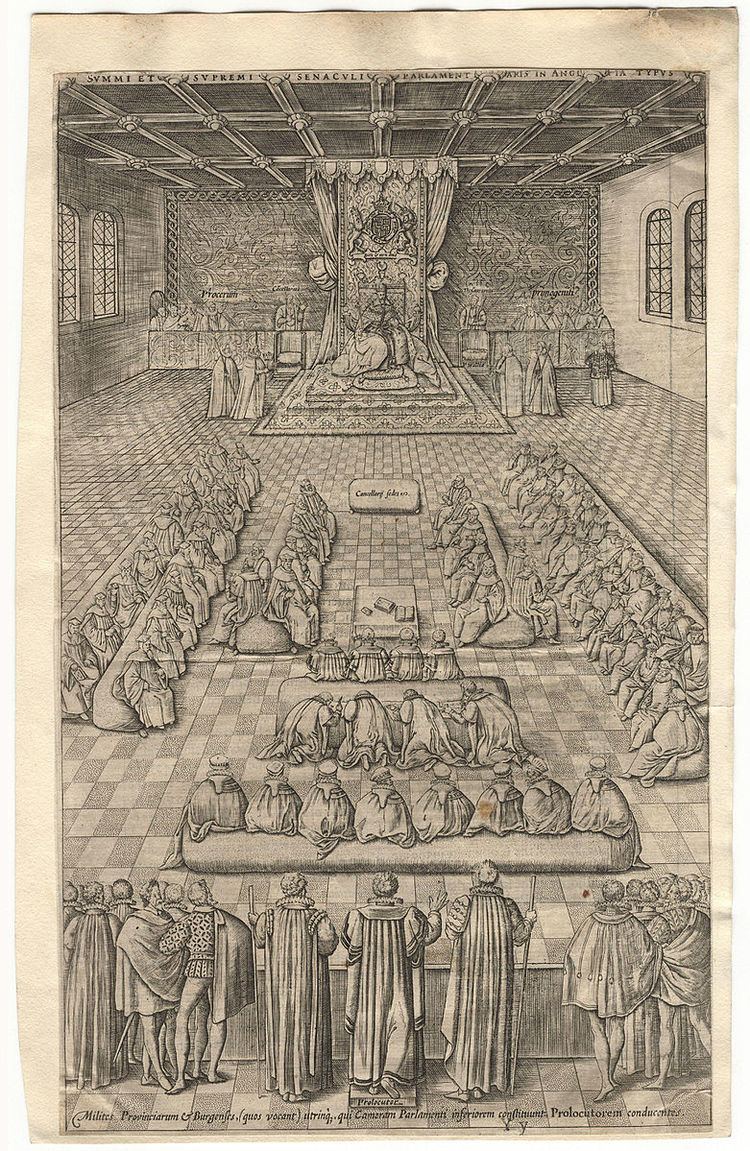Nationality English Other names Reginold Elstrack | Occupation Engraver Name Renold Elstracke | |
 | ||
Renold Elstracke (also Reginold Elstrack), 1570 – after 1625, was one of the earliest native engravers in England.
Contents
Biography
Renold (or Reginold) was born in 1570. He was the son of Joselphe Elstrage of Lukeland, now part of France, who came to England in 1551. He was in all probability a pupil of Crispin van de Passe the elder at Cologne, and came to England at the same time and under the same circumstances as the younger members of the Van de Passe family.
A print of Charles I ascribed to Elstracke, in which case he must have lived on into the reign of the latter king. It is not known when he died. The known mention in the historical record is 1625.
Works
Elstracke's first known pieces come from a translation of Jan Huygen von Linschoten's Voyages into ye Easte and West Indies published in 1598. William Rogers, his well-known predecessor, engraved the title-plate while Elstrack engraved five of the maps used in the work.
Elstracke's major production was the set of engravings of the kings of England, published in 1618 by Henry Holland and sold by Compton Holland under the title of Basilioilogia; a Booke of Kings, being the true and lively Effigies of all our English kings from the Conquest until this present, with their several coats of Armes, Impreses, and Devises! And a briefe Chronologie of their lives and deaths, elegantly graven in Copper. This set consists of thirty-two portraits and a title-page containing portraits of James I and Anne of Denmark. "By this time, however, his work was rapidly becoming outdated, as the recently arrived Simon de Passe and Francis Delaram had introduced new patterns and styles from abroad (Griffiths 2004)."
The title-page, with different portraits, was used for the Earl of Monmouth's translation of Biondi's History of the Civil Wars.
The plates were subsequently used for Florus Anglicus, or Lives of the Kings of England, and again for William Martyn's Historie and Lives of the Kings of England. In both these cases they have letterpress at the back, and are in a very much worn condition.
One of the rarest of Elstracke's engravings, and the most highly prized by collectors during the 19th century, is the double whole-length portrait of Mary Queen of Scots and Henry, Lord Darnley; an impression of this was sold in 1824 in the collection of Sir Mark Sykes for £81 18/-.; the same print was sold at the dispersal of the Stowe Granger... in 1849 (when a great number of Elstracke's engravings were disposed of) for £33'. 10/-., and in March 1884, at the sale of the Dent collection, was purchased for the British Museum at a cost of £150.
Among other rare engravings by Elstracke were similar portraits of Frederick V, Elector Palatine, and Princess Elizabeth (Dent sale, £23.), and James I of England and Anne of Denmark (Dent sale, £65) A portrait of Sir Richard Whittington was first engraved by Elstracke with the hand resting on a skull, which was subsequently altered to a cat; in its original state it is extremely rare.
Among other notabilities whose portraits were engraved by Elstracke were:
Elstracke also engraved numerous frontispieces. A print of James I sitting in parliament is dated 1624, and there is a similar print of Charles I ascribed to Elstracke.
